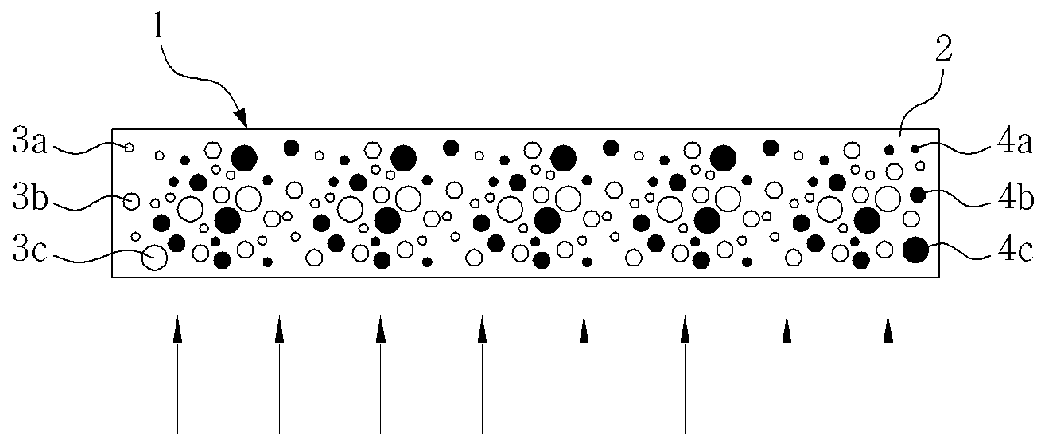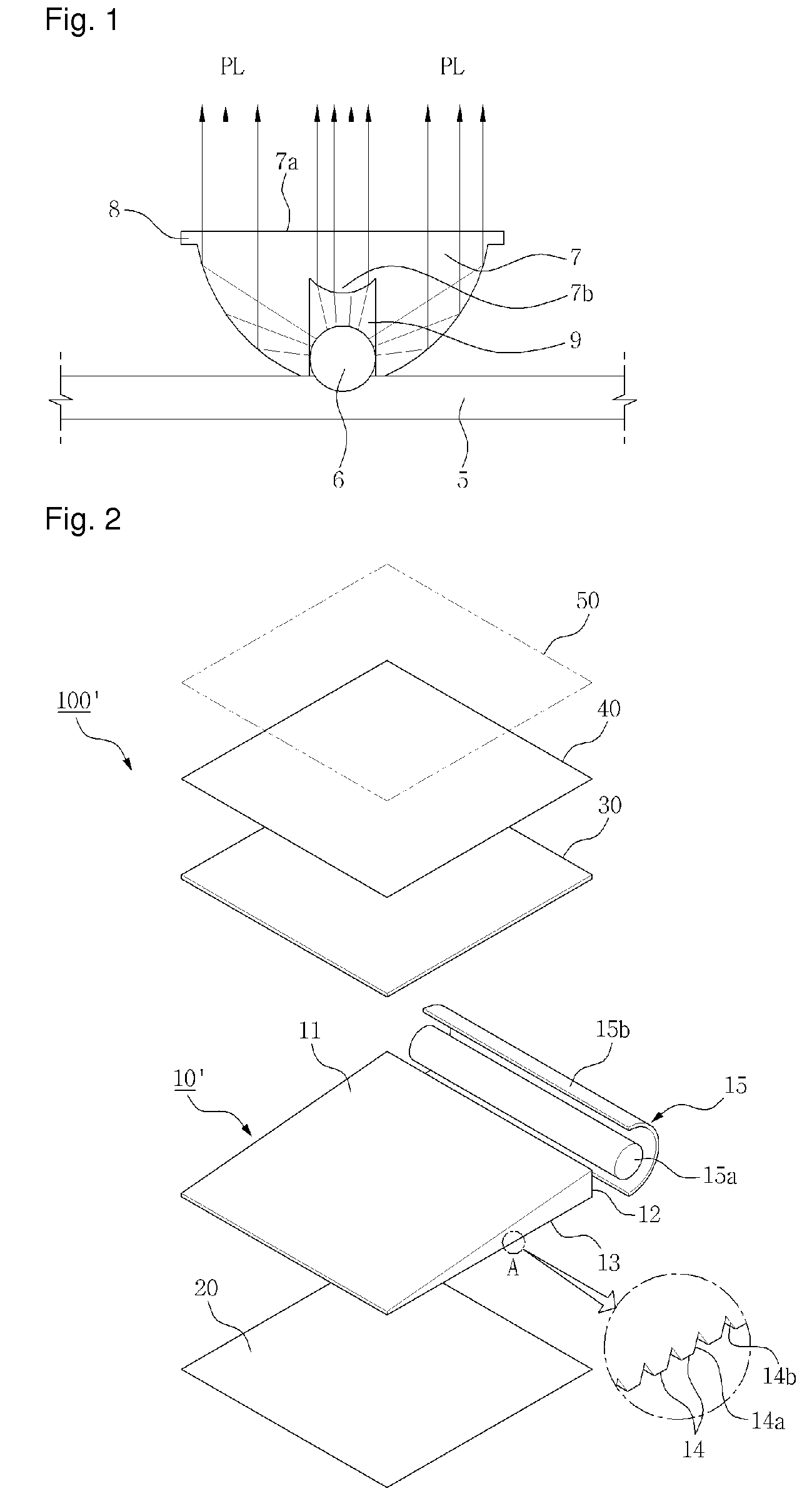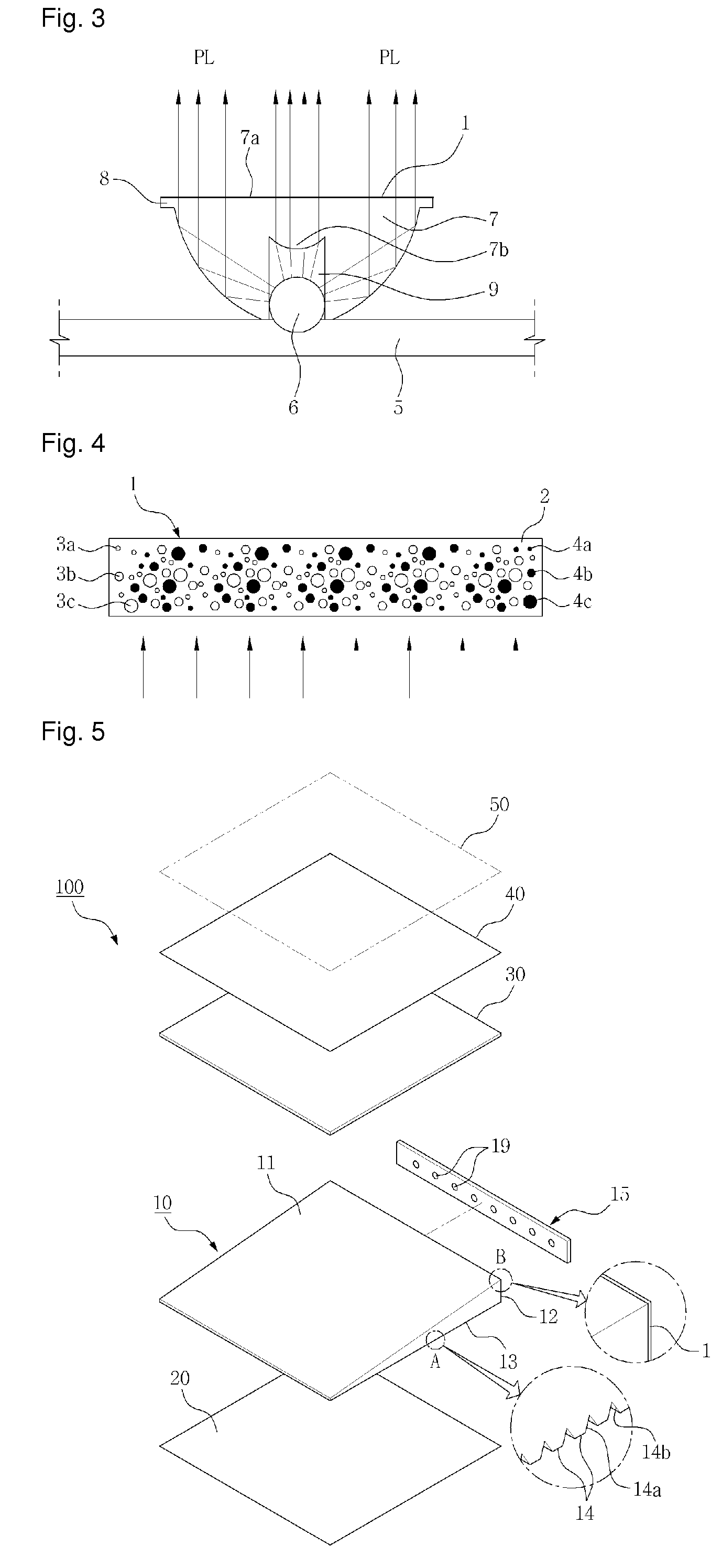UV coating composition for LED color conversion
a technology of led coating and color conversion, which is applied in the direction of instruments, optical elements, planar/plate-like light guides, etc., can solve the problems of increasing product size, low optical characteristics and reliability of products, and requiring a relatively high manufacturing cost, so as to achieve simple and easy replacement of lenses and short lifespan
- Summary
- Abstract
- Description
- Claims
- Application Information
AI Technical Summary
Benefits of technology
Problems solved by technology
Method used
Image
Examples
example 2
[0089]An LED lens was formed using an epoxy resin through injection molding, and a mixture of 92 wt % of an epoxy acrylate monomer and an oligomer (containing 3.5 wt % of alpha-hydroxyketone as a photoinitiator), 6 wt % of (YGd)3Al5O12:Ce as a yellow phosphor, and 2 wt % of polymethyl (meth)acrylate having an average particle diameter of 2.0 μm (index of refraction: 1.50, light transmittance: 91%) as light diffusing beads was deposited on an upper surface of the LED lens and subjected to irradiation using a xenon lamp with an exposure of 890 mJ for 30 seconds, thereby forming a 85 μm thick UV coating layer for LED color conversion.
[0090]The prepared LED lens was mounted on a blue LED. Upon operation of the LED, white light was obtained.
example 3
[0091]A UV coating layer for LED color conversion was formed on a flat upper surface of an epoxy LED lens by the same method as in Example 1, except that a mixture of 87 wt % of an urethane acrylate monomer and an oligomer (containing 1.8 wt % of phenylglyoxylate as a photoinitiator), 7 wt % of Y2O2S:Eu,Gd as a red phosphor, 3 wt % of ZnS:Cu,Al as a green phosphor, and 3 wt % of polymethyl (meth)acrylate having an average particle diameter of 2.0 μm as light diffusing beads was deposited on the flat upper surface of the LED lens.
[0092]The prepared LED lens was mounted on a blue LED. Upon operation of the LED, white light was obtained.
example 4
[0093]A UV coating layer for LED color conversion was formed on a flat upper surface of an epoxy LED lens by the same method as in Example 1, except that a mixture of 92.5 wt % of an acryl acrylate monomer and an oligomer (containing 1.5 wt % of phenylglyoxylate as a photoinitiator), 3 wt % of LiAlO2:Mn as a red phosphor, 2 wt % of Y3(GaxAl1-x)5O12:Ce (010O17 as a blue phosphor, and 1.5 wt % of polymethyl (meth)acrylate having an average particle diameter of 2.0 μm as light diffusing beads was deposited on the flat upper surface of the LED lens.
[0094]The prepared LED lens was mounted on a violet LED. Upon operation of the LED, white light was obtained.
PUM
| Property | Measurement | Unit |
|---|---|---|
| wt % | aaaaa | aaaaa |
| particle diameter | aaaaa | aaaaa |
| particle diameters | aaaaa | aaaaa |
Abstract
Description
Claims
Application Information
 Login to View More
Login to View More - R&D
- Intellectual Property
- Life Sciences
- Materials
- Tech Scout
- Unparalleled Data Quality
- Higher Quality Content
- 60% Fewer Hallucinations
Browse by: Latest US Patents, China's latest patents, Technical Efficacy Thesaurus, Application Domain, Technology Topic, Popular Technical Reports.
© 2025 PatSnap. All rights reserved.Legal|Privacy policy|Modern Slavery Act Transparency Statement|Sitemap|About US| Contact US: help@patsnap.com



